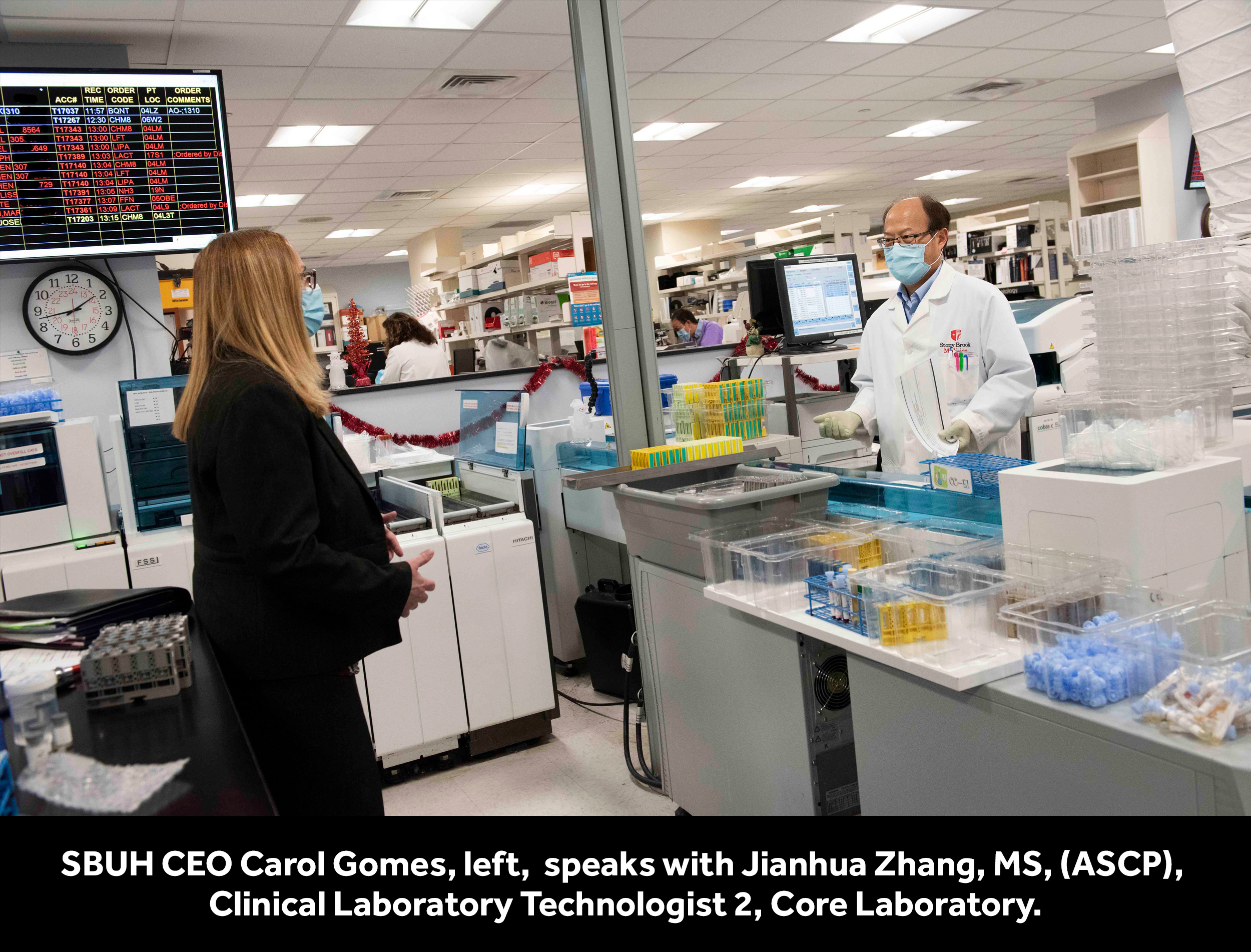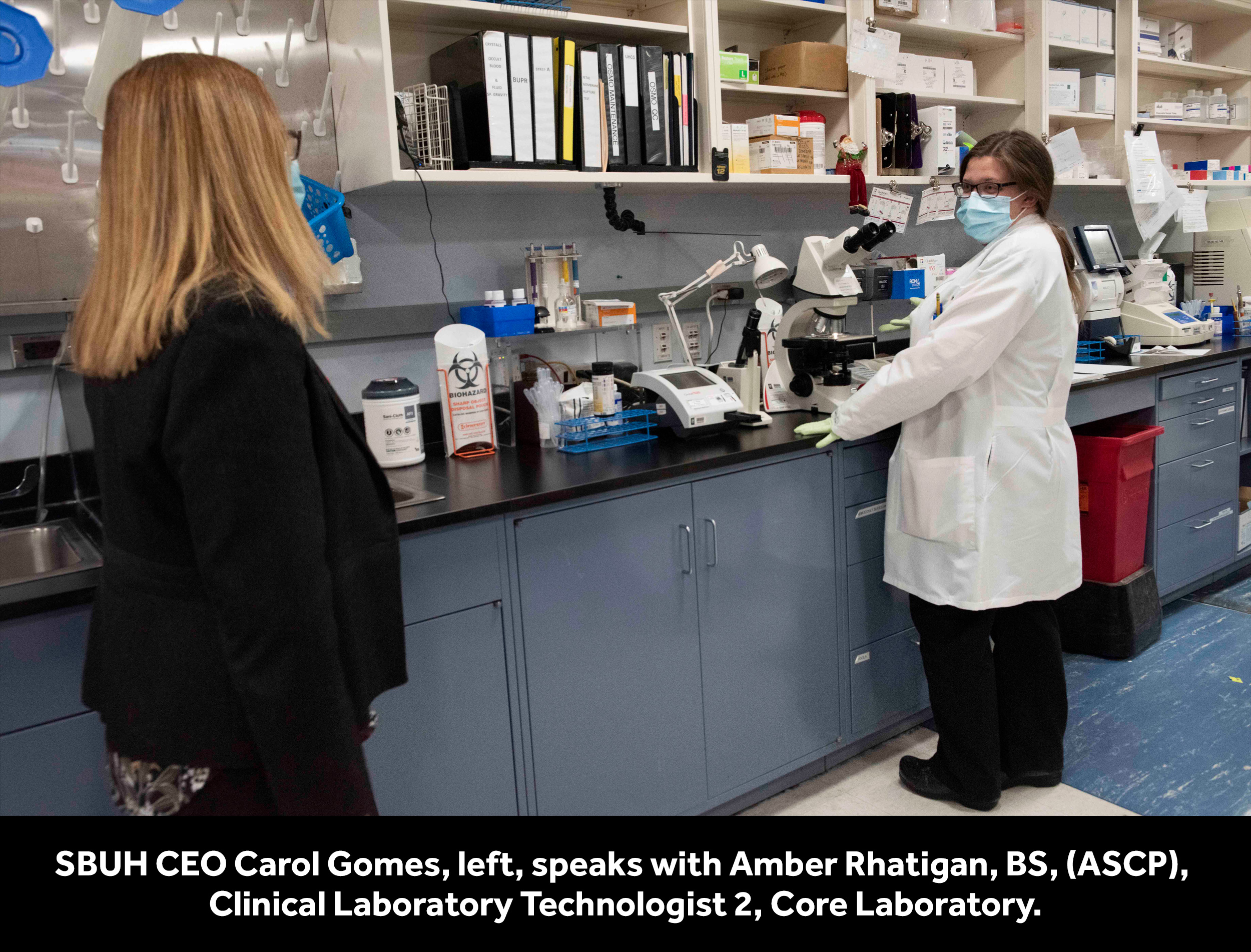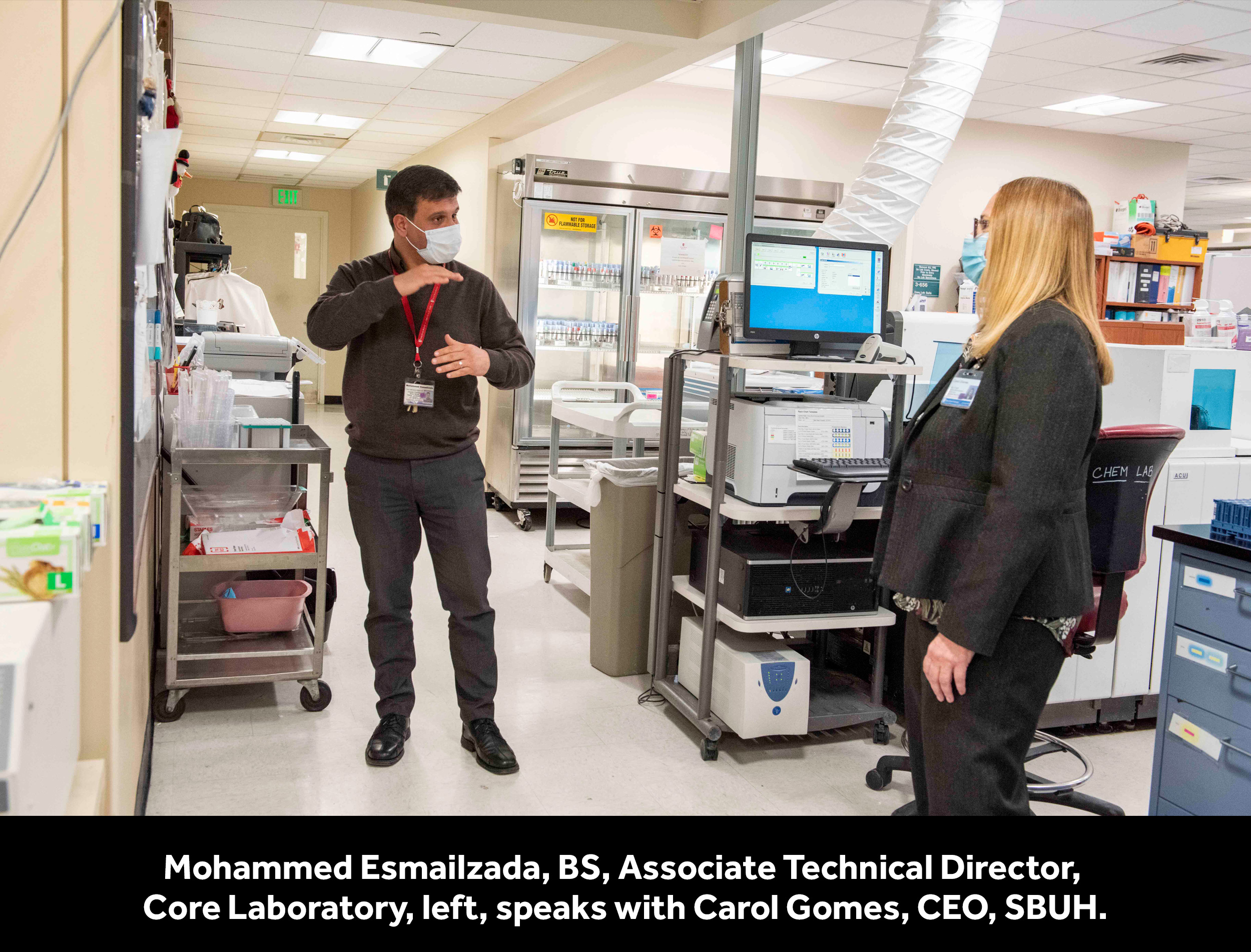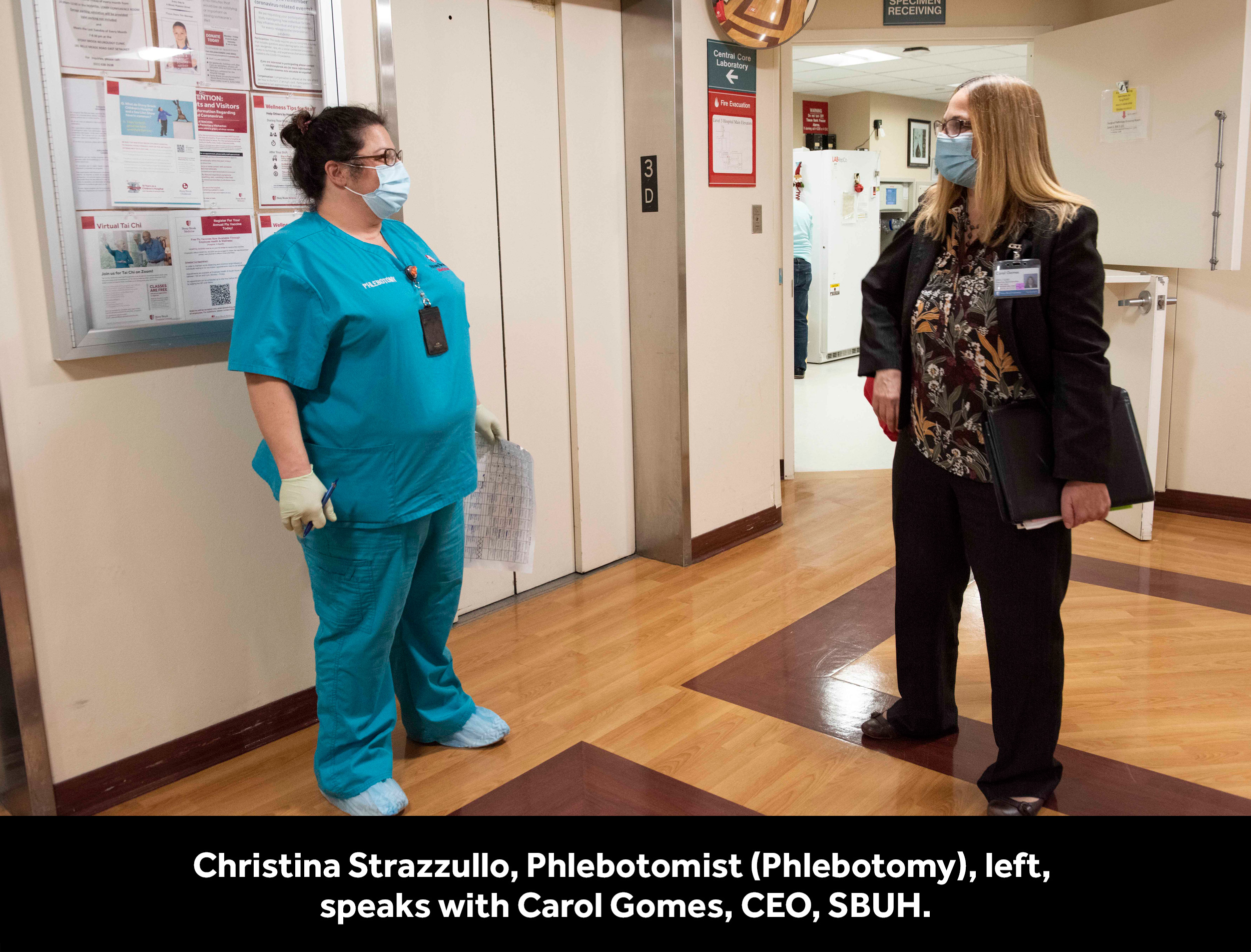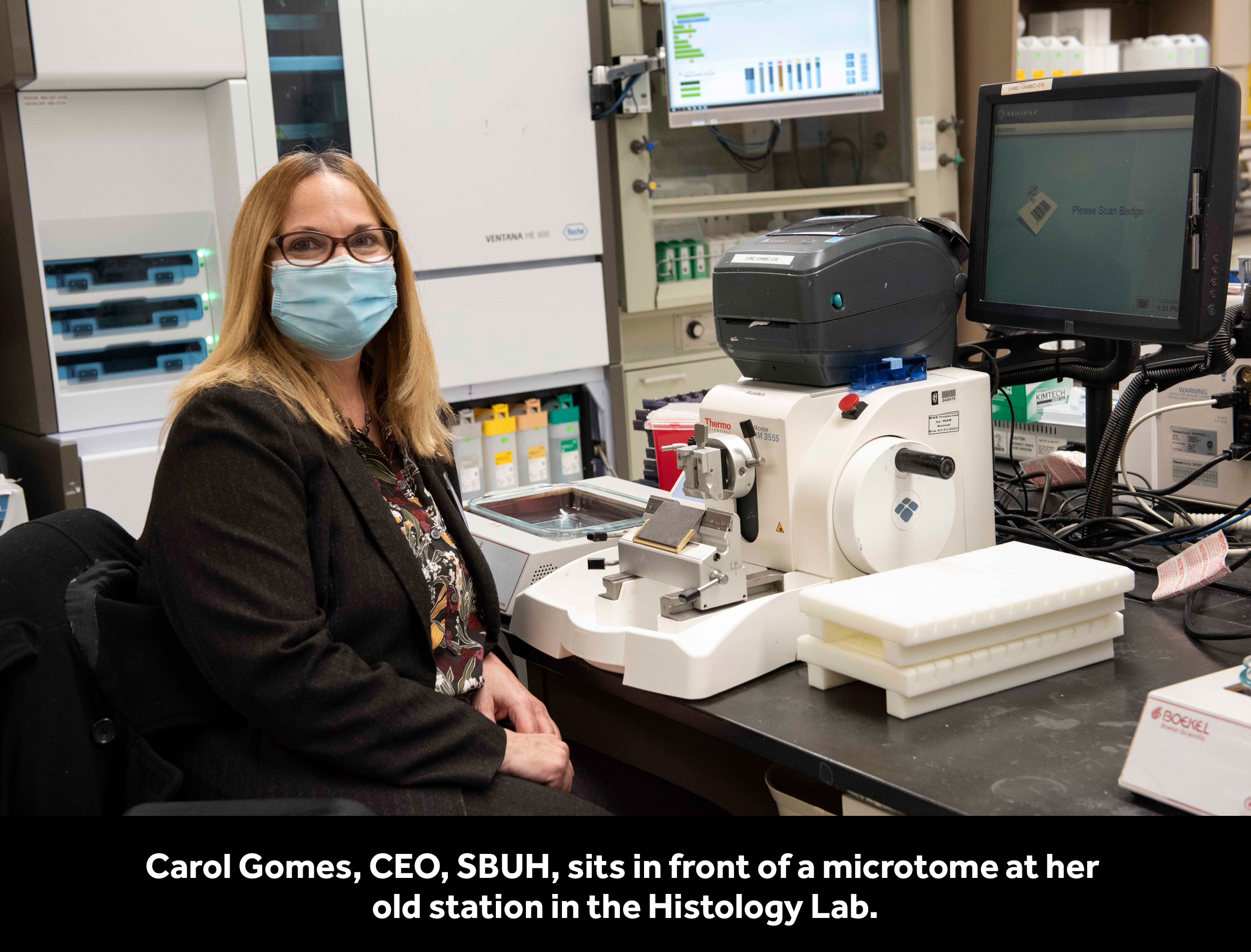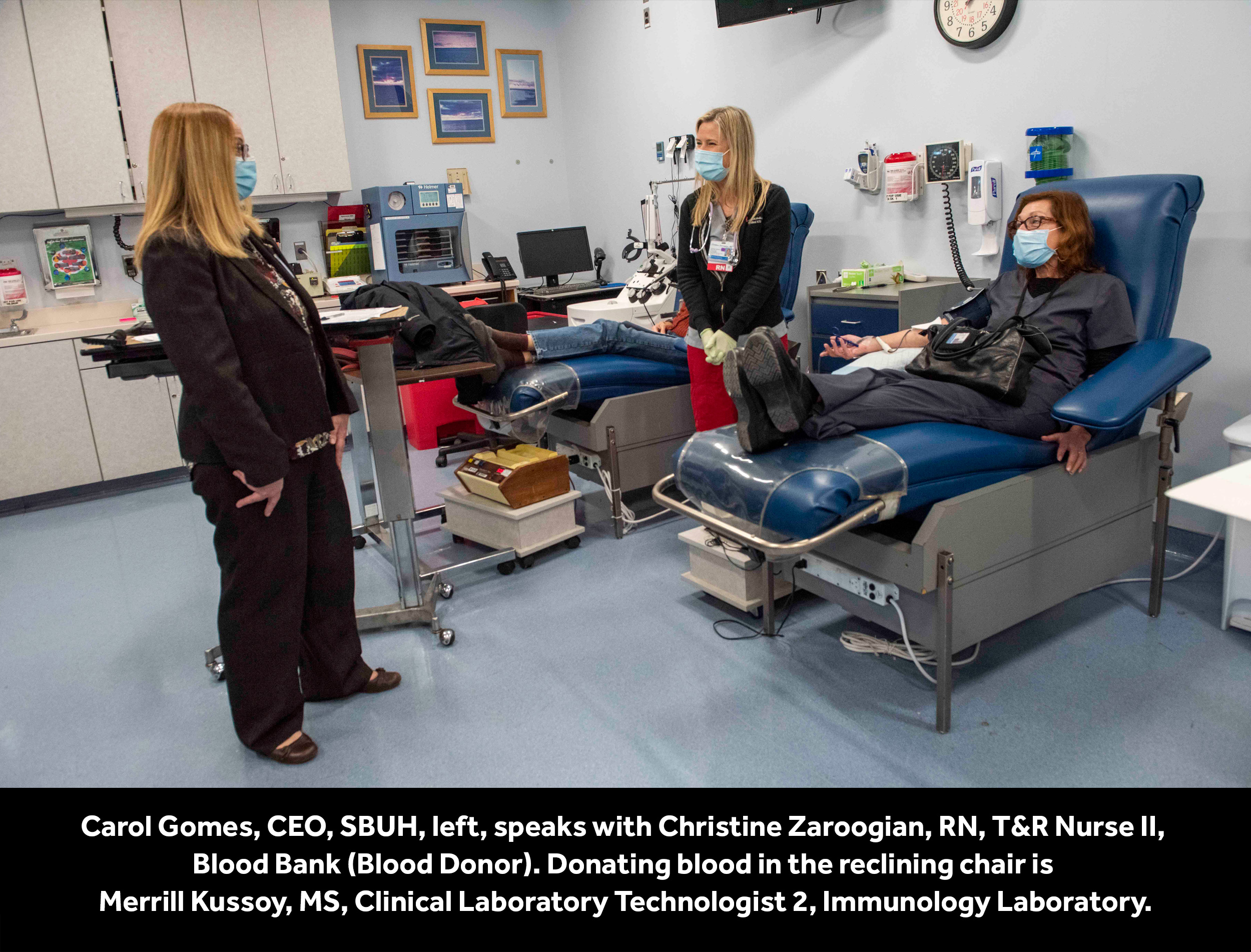In my recent visit to the Core Lab, I had the pleasure of meeting Jianhua Zhang, who has been working at Stony Brook University Hospital for 13 years. He initially started in pathology research, but wished to pursue laboratory opportunities in the clinical lab, which assists in helping patients while interacting with physicians and nurses. He traveled from China in 1993 to work at Stony Brook in Biochemistry and moved into clinical laboratory work.
When Amber Rhatigan, another laboratory technologist in the Core Lab, recently decided to join the team in clinical pathology, she targeted the opportunity to work at Stony Brook due to its well-sought reputation and state-of-the-art facility. The Core Lab provides fundamental laboratory chemistry and hematology testing, often with swift turnaround times to provide timely patient care. Amber said she enjoys working as part of a high-functioning team.
As we moved to the Molecular Genetics Laboratory, there was ample hustle and bustle, as many specimens continue to be received in a steady stream for COVID-19 testing. The day I visited the laboratory, a new analyzer was being installed, the NeuMoDx, which has the ability to conduct high-volume COVID-19 testing, and was long awaited to provide more testing capacity for the hospital.
Under the direction of Dr. Silvia Spitzer, who has been working tirelessly to provide continuous testing during difficult times, I met Dominique Doran, who has been working for four years in Molecular Genetics. She said she enjoys working close to home in a laboratory that provides top-quality testing, and she said it is an exciting profession. She has learned aspects relating to laboratory information systems, which keeps her skill set fresh and varied. Evelyn Takaki said has worked in our labs for nearly 10 years, starting in flow cytometry. However, in 2010, the H1N1 virus held her interest, which allowed her to gravitate towards working in the Molecular Genetics Lab.
Moving into Anatomic Pathology, Kathleen DaSilva gave me a quick review of fine needle aspiration evaluations and shared the progression of technology used in cytology over the past decade. As we ventured toward the Histology Laboratory, I had the pleasure of meeting with Karen Thompson. Karen’s take on histology was quite interesting and impressive. She has spent nearly 20 years working as a histotechnologist; however, it was her love of art and science that led her to histology.
The Histology Lab conducts special stains and immunofluorescence that produces vibrant colors, as well as the patterns of tissue ribbons stretched across a water bath, which first attracted Karen to this profession. She said that working in the Histology Laboratory allows her to realize a balance of art and science that provides fulfillment in her chosen career.
The Blood Bank has also played a role in the pandemic crisis. It was noted that nearly 800 units of convalescent serum were collected by apheresis in order to assist patients through research efforts to combat the virus. John Mirandi, a recently retired laboratory technologist, returned to work during the pandemic in order to be involved to support the community need. He indicated that he looked back fondly on his long-term career at Stony Brook and the progress that has been made in terms of the sophistication of laboratory technology.
The Therapeutic Apheresis service provides daily scheduled treatments and off hour treatments for inpatients and outpatients. Apheresis is a medical procedure that involves removing whole blood from a donor or patient and separating the blood into individual components so that one particular component can be removed. The remaining blood components then are re-introduced back into the bloodstream of the patient or donor. In some cases, blood products (i.e., fresh frozen plasma, albumin or red blood cells) are replaced during the same process.
Through utilization of specialized machines and trained registered nurses, the following treatments can be performed: plasmapheresis, red blood cell exchanges, white blood cell depletions, platelet depletions, and peripheral blood stem cell collections. These treatments help to benefit hematology, neurology, pediatric, renal transplant and oncology patients.
Besides our skilled and talented medical technologists and technicians, phlebotomists draw the necessary blood to perform laboratory testing. In addition, Specimen Receiving staff obtain specimens from all corners of the hospital, and even external locations, and accession each specimen with clear identifiers to prepare specimens for the appropriate laboratory to conduct testing and lab result reporting.
Lab supervisors work closely with the MD/PhD chiefs of each lab to perform high-quality laboratory testing in order to ensure safe and effective patient care. Under the leadership of Dr. Kenneth Shroyer, Dr. Eric Spitzer, Laurie Rafkin and Evrim Erdogan, PhD, many of the laboratories are open 24/7 to provide services needed for patient care.
I thoroughly enjoyed the opportunity to tour the labs and marvel and the level of sophistication and technology that has occurred over the past 30 years in laboratory sciences. The progress is incredibly impressive, and our staff is clearly dedicated and committed to patient care.
Carol


